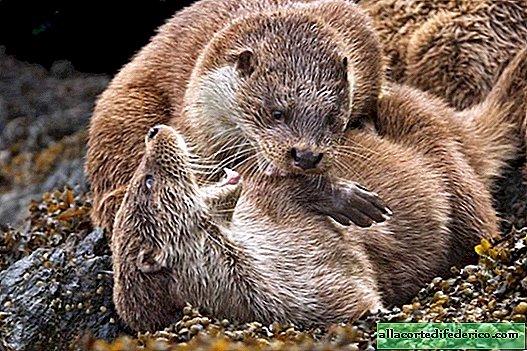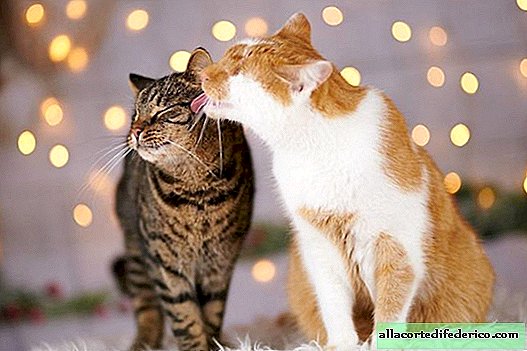How otters learn from each other, and why their survival depends on it
Otters are cute waterfowl mammals, for which social connections are of great importance. As recent studies have shown, they are not even opposed to spying on a solution to a difficult task from their neighbors in order to better learn how to solve them themselves. Young individuals coping with the experience of their parents were especially good at this. Moreover, such behavior is observed only in smooth-haired otters. Their brethren, eastern clawless otters, turned out to be the worst students.
Quick Otters
In order to study the ability of otters to learn, scientists created a series of puzzles, the reward for solving which was a treat. Many species of otters are vulnerable or endangered, and scientists say their research can help return the otters to the wild. After all, this is literally social training: otters receive useful interaction skills, so that later they can better settle in natural conditions.

The results showed that smooth-haired otters prefer to copy solutions from other brethren and parents. Thanks to this, younger individuals have learned to solve these puzzles more than six times faster than their parents. Moreover, the success of training depended on the strength of social ties. Therefore, young otters more often "spied on the answers" from those brothers and sisters with whom they spent most of their time.
Without friends you a little
Otters from zoos and nature reserves in the United Kingdom were invited to open food containers with clamps on their lids, screw or retractable lids. Inside was what gave the subjects additional motivation: peanuts or fish heads. The most difficult task was this: a block of frozen shrimp was attached to a bamboo cane, which had to be moved up and to the right to remove from the box. Only less than half of all the otters managed to solve it.

Smooth otters became "excellent students". In the wild, they often cooperate to fish, and therefore tend to look at each other to gather information. Moreover, eastern clawless otters turned out to be poor students. Scientists believe that this is due to their lifestyle: this type of otter does not feed in groups, and their natural diet consists mainly of mollusks and crabs, which fishing does not require group hunting strategies.

















